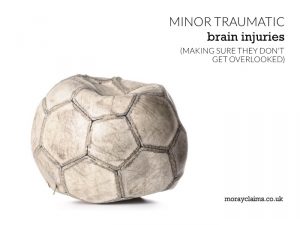In the video below, Peter Brash of Moray Claims and Grigor & Young explains how we can help you with advice in relation to a possible personal injury claim, especially if you are in Moray. We recommend all injured people to get advice as soon as possible from a local, specialist solicitor. By doing that, you'll be clear about your rights and be in a position to get proper access to justice should you choose to go down the route of making a compensation claim. You need to speak to someone who is not only knowledgeable and experienced, but independent and definitely on your side. The insurers on the other side of your potential claim fit the "well-informed" bit but they're principally looking after the interests of their shareholders and not your interests, despite what they may tell you. In the video, Peter explains why "local is best", in our view. Early advice from a solicitor will set you off on the right track, with the best chance of avoiding all the pitfalls. And Continue Reading
If you were not wearing a cycle helmet can you still claim for personal injury?
The law in the UK does not require pedal cyclists to wear a helmet. What this means is that you won’t be stopped by the police if you fail to wear a cycle helmet. You won’t be prosecuted under the criminal law. On the other hand, Rule 59 of the Highway Code categorises cyclists as vulnerable road users and advises that cyclists ‘should wear a cycle helmet which conforms to current regulations, is the correct size and securely fastened’. The Highway Code is relevant to both criminal and civil law. Claims for personal injury compensation are civil claims for damages, so the Highway Code is relevant. Many cyclists ride without a helmet. Only just over a third of cyclists using major urban roads wore cycle helmets, according to research findings of the UK’s Transport Research Laboratory in 2008. Equivalent research in Germany apparently showed that only 11 % of cyclists in towns and cities wear a cycle helmet. Cycle helmets have to comply with a European standard. This Continue Reading
When you should get help from an Advocate with your personal injury claim
In November 2017, Formula One world champion racing driver, Lewis Hamilton, had a damage limitation issue to deal with. The so-called "Paradise Papers" had suggested that he was avoiding tax on his £16.5 million private jet and that he managed his image rights through a Maltese company. In an attempt to generate some goodwill for himself, he went onto social media and tweeted: “Guys, to support kids living in poverty I've donated a pair of my PUMA shoes to @SmallStepsDocs and signed them.” The Small Steps Project is a UK charity which helps children and communities who live on municipal rubbish dumps – in various parts of the world – get themselves out of poverty by providing them with emergency aid, including food and shoes. The generosity of this gesture (a pair of shoes), in fundraising terms, seemed limited. Indeed, one "Alternative Sports Awards" review of 2017 gave it the prize for "Worst Attempted PR Save". We don't know how much assistance Lewis Hamilton Continue Reading
Compensation for Subtle Brain Injuries
One of the most outstanding English football centre forwards of the 20th Century tells of how, in February 1941, he received his call-up papers to the Royal Air Force. After his basic training, he passed on to the course set for a wireless-operator air-gunner. His training took him to numerous places across England. Finally, he was posted to Moray where he was to have an accident which could easily (at best) have ended his footballing career before it had even begun. He takes up the story in his 1949 autobiography, “Football Is My Game”. “It was while I was at Lossiemouth that I met with the accident which nipped my “career” as a W/op.A.G. in the bud, and prevented me from being sent abroad. We were on operational training; the Wellington (bomber aeroplane) caught fire, and down we went in a dive. We finished in a fir plantation. The pilot and bomb-aimer were killed. The navigator lost a leg. I got out alive with various injuries of which the worst was a head wound Continue Reading



